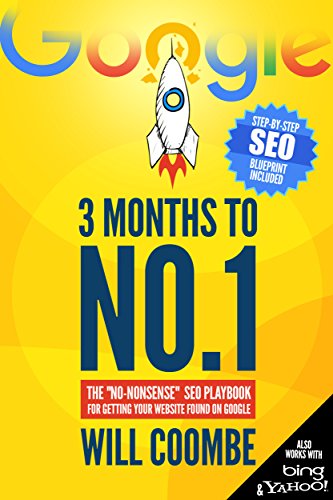Ultimate Guide to On-Page SEO: Techniques and Strategies
On-page SEO is an essential element in getting your site ranked higher. To achieve this aim, it is necessary to optimise all content, tags and links on a webpage so that search engines can better understand your website. Doing so will make them more likely to feature your site among their search results.
Today's online market demands that you use effective on-page SEO techniques and strategies if you are going to stand out from rival sites and get as much organic traffic coming your way as possible. By optimising the likes of content, meta tags and internal links – i.e., everything featured on any given page – not only will you bolster visibility but improve user experience at the same time.
Take someone who sells organic skincare products, for example. Thanks to incorporating on-page SEO techniques such as ensuring product descriptions contain relevant keywords, creating an informative blog post about skincare routines featuring long-tail keywords or adding internal links that take users directly to a specific product via anchor text, anyone selling an organic remedy could boost how visible they are within search engine results pages (SERPs), attracting potential customers keenest on finding something suitable.
With me so far? Good. Let's delve deeper into the different types of on-page SEO techniques and strategies available for those looking to optimise webpages further to rank higher in SERPs.
Table of Contents
On-Page SEO Techniques and Strategies
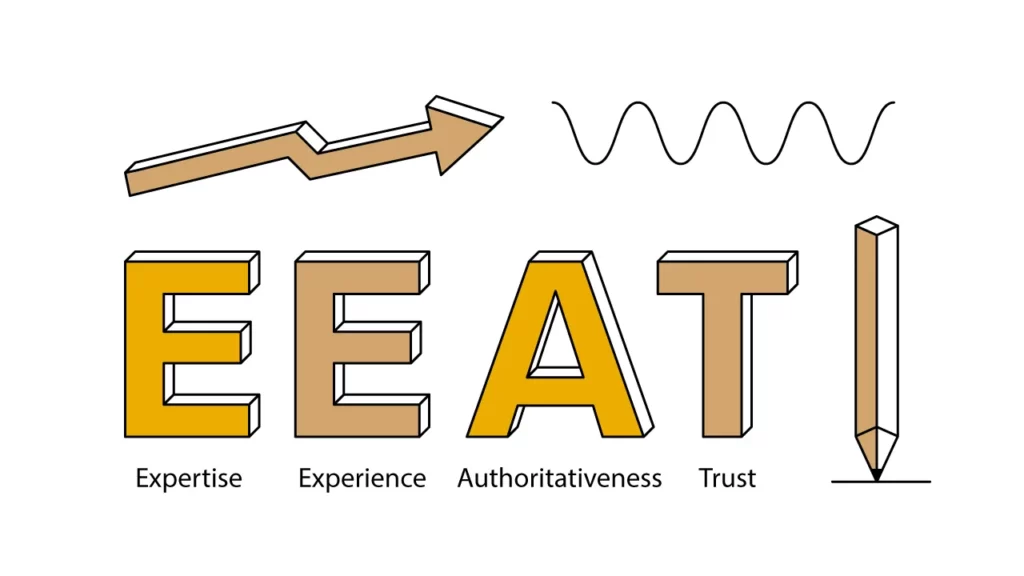
Mastering the art of on-page SEO requires a range of techniques and strategies, all designed to optimise the content and structure of your webpage. There are many factors to consider, but one crucial aspect is creating high-quality content demonstrating experience, expertise, authority and trustworthiness (E-E-A-T). For example, this might include ensuring that information on a given topic is accurate, valuable and well-sourced – in short, showing you know what you're talking about.
If your website offers financial advice or guidance, for instance, it's vital to provide up-to-date information about various financial topics; not only does this require conducting research into reliable sources of information but also presenting data in an accessible manner. Including statistics or case studies can help support any claims made; offering expert input will further mark your site as a trusted source for those seeking financial advice.
Keyword optimisation is another crucial technique when it comes to on-page SEO. Identify relevant keywords with high search volumes via keyword research tools like Google Search Console or Ahrefs' Keyword Explorer. Then, placing these strategically within the meta tags (e.g., title tag), headings (H1-H6) and body copy of each page's content – helping search engines understand context/relevance better so they can display appropriate results higher up their pages!
So suppose you're running an online store specialising in selling trainers. In that case, use keyword research to find popular search terms related specifically to trainers, such as “best running shoes for beginners” or “lightweight running shoes”. You would then incorporate these naturally throughout product descriptions/blog posts, boosting visibility when potential customers come looking!
Incorporating visual assets such as images/videos/infographics is another effective way to improve on-page SEO performance because these elements enhance user experience while providing optimisation opportunities, too! Think about alt tags/filenames/captions, etc.; when appropriately done, this can improve visibility within specific search results (e.g., image searches).
Let's say you're a travel website that features various destination guides. By including high-quality images/videos of the locations being written about – giving users something visual to ‘connect' with – and optimising alt tags/filenames accordingly (by using relevant keywords), you'll increase your chances of showing up in related image searches!
Given all these considerations, it becomes clear that getting on-page SEO right is a challenging feat. But by mastering the techniques and strategies mentioned here, as well as others – such as website structure optimisation or internal linking analysis – site owners can make their pages more visible in search engine rankings!
On-Page SEO Checklist
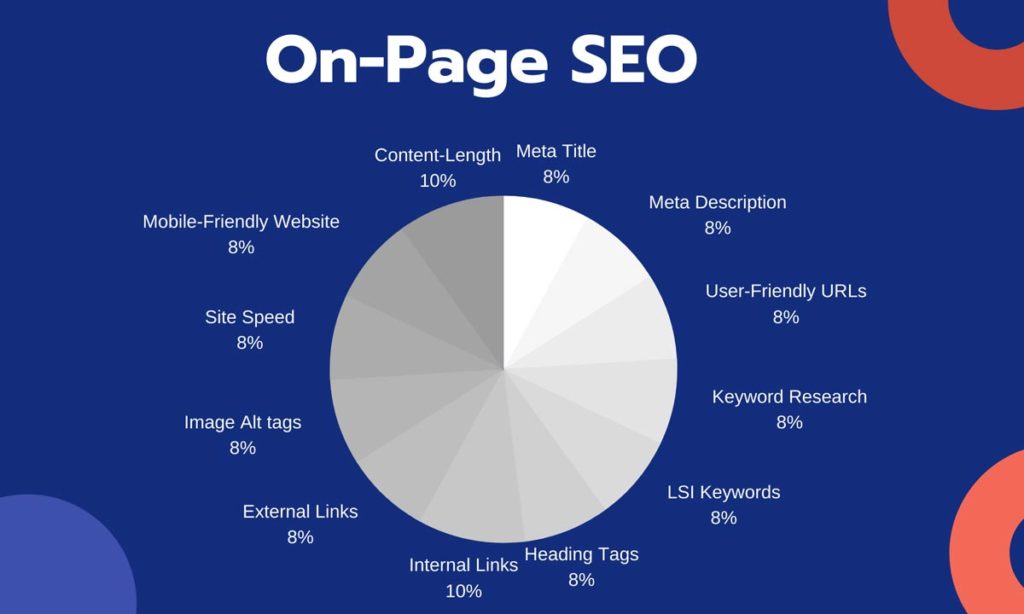
The on-page SEO checklist ensures that all vital elements are optimised and is an essential guide. By following through the checklist, those who own websites can review systematically and optimise various aspects of their web pages. This enhances both search visibility and user experience.
Given below are some key elements to consider in an on-page SEO checklist:
Title tags: These should be compelling, keyword-rich, and accurately describe what the page is about.
Meta description: The aim is to make this concise but informative enough that people will want to click through from search results to your page.
Header tags: Make sure you use proper header tags (H1, H2, etc.) so Google knows how you've structured your content – this does help with ranking for relevant terms.
Keyword placement: Identify where keywords appear in your content/body copy, headings and meta tags.
Internal linking: Add relevant internal links within your site to improve navigation and offer more value to users
Mobile optimisation: Ensure pages are fully mobile-optimised — being mobile-friendly is now a ranking factor
- Amazon Kindle Edition
- Coombe, Will (Author)
- English (Publication Language)
- 249 Pages – 09/08/2017 (Publication Date)
For example, consider a company optimising a webpage about healthy eating tips. In their on-page SEO checklist, they would include making sure the title tag accurately reflects the content of the page; working out how best to summarise these healthy eating tips in their meta description (and then doing so); using proper header tags (h1, h2 etc) across the piece when structuring it; putting thought into where they place any related keywords throughout; adding internal links within existing articles/pages on their website that point readers back here (or incorporating other interlinking opportunities elsewhere); making sure the webpage fully adheres to what's required from a mobile-optimisation standpoint etc.
Following an on-page SEO checklist makes sense for website owners/web admins/marketers, or whoever else might be responsible for optimising a webpage to ensure they've covered all the necessary bases. This should ensure their pages are in as good shape as possible and have every chance of ranking well in search results, i.e., highly up the listings in response to relevant queries.
Best Practices for On-Page SEO Optimisation

One must adhere to best practices to maximise the efficacy of on-page SEO. By incorporating these techniques into website optimisation, it is possible to improve search rankings and increase user satisfaction.
One such best practice is optimising title tags and meta descriptions. Designing persuasive, keyword-rich title tags and meta descriptions can help improve click-through rates from search results pages (SERPs). These should be accurate about the page's content, with relevant keywords included where appropriate and providing concise yet descriptive information that motivates users to click.
For example, if your webpage offers tips for home gardening, a well-optimised title tag might read “10 Essential Home Gardening Tips for Beginners”. At the same time, an optimised meta description could state: “Discover the best tips and tricks for starting your home garden. From choosing the right plants to proper watering techniques, our guide has everything you need to get started.”
Another critical technique is designing user-friendly URLs. URLs should include relevant keywords where appropriate and be structured to make them easy to read and understand. This helps search engines understand what a page is about and improves usability.
For example, say you have a webpage about eco-friendly cleaning products – rather than using a generic URL like www.example.com/page123, something more useful might be www.example.com/eco-friendly-cleaning-products: this tells both humans and machines exactly what topic the page covers – making it even more likely they will click through if they are looking for eco-friendly cleaning products themselves.
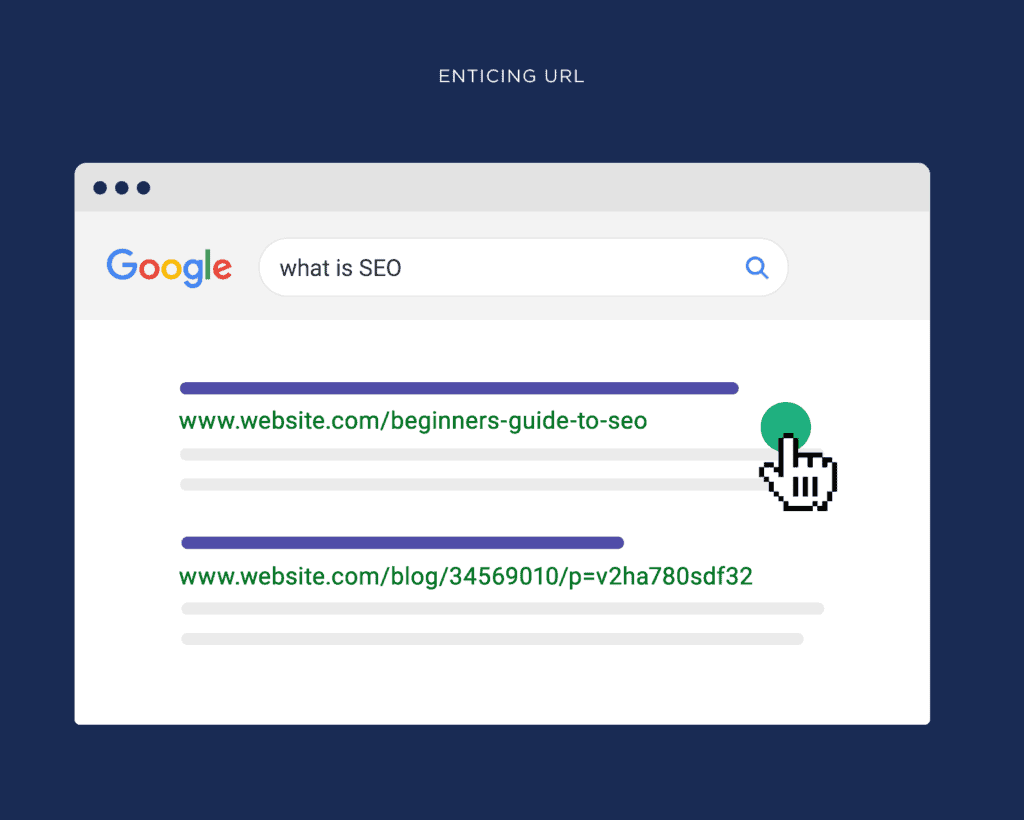
Another crucial on-page SEO best practice is image optimisation. Site owners can improve their visibility in search results and offer a better user experience by utilising descriptive filenames, optimising alt text, and compressing images.
For example, if a website sells handcrafted jewellery, it could optimise the alt text and filenames of product images with relevant keywords like “handmade-silver-necklace” or “gemstone-earrings,” increasing the likelihood that its products would appear in image search results for those phrases.
Using internal and external links strategically is another on-page SEO best practice. Internal links within a site help search engines understand the structure and hierarchy of content, while external links to authoritative sources add value for users and boost the page's authority.
For instance, a blog post about healthy recipes might include internal links to related articles or recipes elsewhere on the site so that users can easily find more content. External links to reputable sources such as scientific studies or expert opinions add credibility to the content and provide users with additional valuable information.
Demonstrating expertise and credibility is also critical regarding on-page SEO best practices. By including clear sourcing information, expert quotes, background information – anything that boosts your content's credibility – you're showing readers (people) and Google (robots!) that you know what you're talking about.
For example, Let's say your website offers financial advice. In this case, you might want to include references from reliable financial institutions as well as quotes from finance experts along with background information about whatever topic you're covering to demonstrate your expertise, show how what you're saying fits into conventional wisdom, or give readers detail they need but may not have.
Following these guidelines will help ensure that website owners can boost their pages' ranking potential with search engines while providing visitors with an optimal on-site experience at the same time.
Critical On-Page SEO Factors to Consider
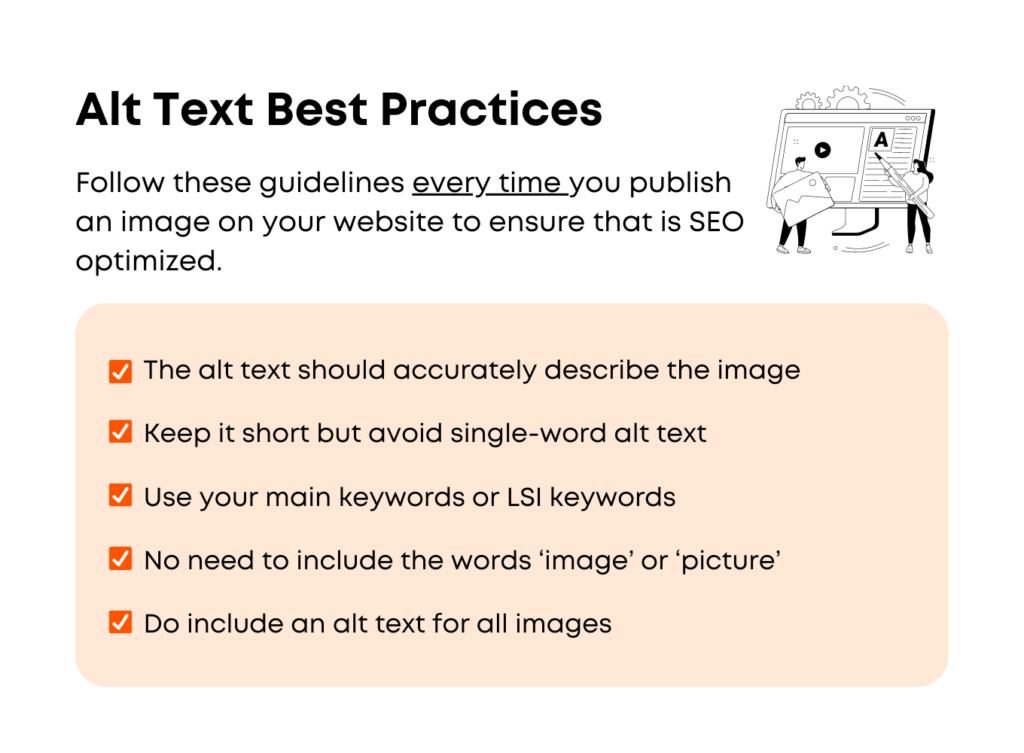
If you want to improve your on-page SEO, there are a few factors that you need to consider. The first is ensuring that HTML elements such as title tags, meta descriptions and image alt tags are all optimised correctly. Another critical factor in modern on-page SEO is responsive design.
These things help search engines easily read the information on your website – so they can understand how relevant it is to specific search queries – and also make it easier for users who visit your site via a mobile device to navigate around.
Some examples of HTML elements you should be considering include:
Title tags: These are found at the top of each page on your site and let search engines (and people) know what a page or post is about.
Meta descriptions: Although Google doesn't use these as a ranking signal per se, they're still instrumental because they can encourage click-throughs from people who see this short snippet of text in search engine results pages (SERPs).
Image alt tags: Search engines can't read images, but if you use descriptive file names and add ‘alt' text (accessible via the image's ‘properties' box), this will give them an idea of what's shown – handy if someone carries out an image-based search using phrases linked to one of your products or services.
- Clarke, Adam (Author)
- English (Publication Language)
- 242 Pages – 11/24/2022 (Publication Date) – Independently published (Publisher)
As we said earlier, having a decent site structure is another critical element of effective on-page SEO. Trying the Yoast SEO plugin for WordPress automatically ensures that content blocks don't sit too closely together, instead spreading individual words evenly across lines.
Having lots of white space makes everything look neater and less intimidating. Consider breaking up long paragraphs with subheadings and bullet points so users can scan-read content more easily. Phew!
Finally, remember that although creating well-optimised webpages may take time initially, once complete – unlike PPC advertising – natural listings require no financial outlay to stay visible. Yet another reason why on-page SEO should form the basis of your ongoing digital marketing strategy!
The importance of website architecture in on-page SEO cannot be overstated. Factors such as site speed, responsive design, URL structure and internal/external linking all play a role in determining your website's overall SEO performance.
For example, slow-loading websites may experience higher bounce rates and lower search rankings. Likewise, poor URL organisation can confuse search engines and make it harder for visitors to navigate your site. By taking these factors into account during the optimisation process – and tweaking them accordingly – you'll improve your on-page SEO while delivering a better user experience.
By homing in on these critical on-page SEO issues, you'll optimise your page(s) for improved search engine visibility, increased organic traffic levels – and enhanced user satisfaction.
Ongoing On-Page SEO Process
Since search engines frequently change their algorithms and competitors constantly add new content, on-page SEO should be a continuous, proactive effort. Because the SEO landscape is continuously evolving, up-to-date best practices must be followed and websites optimised accordingly. Regularly monitoring performance data to identify areas for improvement, updating content as needed and adapting to shifts in search engine algorithms are all part of an ongoing on-page SEO process.
A technology trends blog run by a company provides a good example. As new technologies emerge and search trends shift, the blog's content must be updated regularly to include the latest information and optimised according to current SEO guidelines. Performance data such as organic traffic volumes or keyword rankings also need to be monitored continually – so if there are ways in which its on-page SEO strategy can be improved, they can learn about this from the numbers.
By “working” their website continuously with an ongoing on-page SEO process like this, site owners can ensure it remains optimised for users' needs and competitive advantage amid ever-changing online conditions.
Advanced On-Page SEO Tips
Mastering advanced methods is essential to improve your on-page SEO efforts. These approaches go beyond the rudiments and have the potential to boost your search engine visibility as well as user engagement.
One such strategy is optimising for featured snippets and rich snippets. Featured snippets are special boxes that sometimes appear at the top of specific search results, offering users concise answers to their questions. Site owners can improve their chances of getting a featured snippet by tailoring content to provide clear, concise answers to common queries.
So, if you run a financial advice website, you might create an exhaustive guide on “how to budget effectively”. By structuring this to address common budgeting questions – like “What's a budget?” or “How do I make one?” – you increase your chances of being used for featured snippets when people look for budgeting advice.
Using schema markup gives you another advanced on-page SEO tip. Schema markup is a structured data format that helps search engines understand and interpret what's happening in specific web page parts. By adding schema markup code to relevant details of your webpage's HTML, you'll be able
to communicate more information about it than would otherwise be possible.
For example, an e-commerce site selling clothing could use schema markup code (specifically product schema) to add extra information to its search results listing; things like average product ratings, price ranges or availability status all help its listing stand out from those around it and offer useful additional information before someone even clicks onto it.
When it comes to advanced on-page SEO, optimising page experience signals is critical. Factors such as mobile-friendliness, page speed and user experience are all part of these signals. Focusing on them can improve your search rankings and provide a better user experience.
For example, you run a website that sells home decor products. To optimise for these factors, ensure your pages load quickly, are mobile-friendly and have an intuitive UI. This helps your search rankings and increases user satisfaction, boosting the likelihood of conversions.
Another advanced on-page SEO tip is monitoring and updating content based on performance data and user feedback. By regularly analysing metrics like time on page, bounce rate or user engagement – then making updates to your content as needed – you can identify areas for improvement.

Let's say you're a business that publishes blog posts: by examining the performance data of each post (e.g., average time on page; number of social shares), you can identify posts with lower engagement rates – then update content as necessary (add more valuable info; improve readability) to increase reader engagement/search rankings.
Republishing updated content is another advanced-on-page SEO technique that allows you to attract more organic traffic/increase visibility by signalling to the search engines that this refreshed content is relevant for current search queries.
For example, if your site offers travel guides, consider periodically reviewing/updating existing guides with new recommendations/the latest information/extra tips. Then, republish those updated guides to appear in SERPs when users look for travel info.
By implementing these advanced-on-page SEO tips, we've covered here today into their campaigns/experiments/templates – no matter what niche/market they operate within! – marketers will be able to take their optimisation efforts to another level…and enjoy even greater visibility in the SERPs/user engagement success than ever!
On-Page SEO vs Off-Page SEO
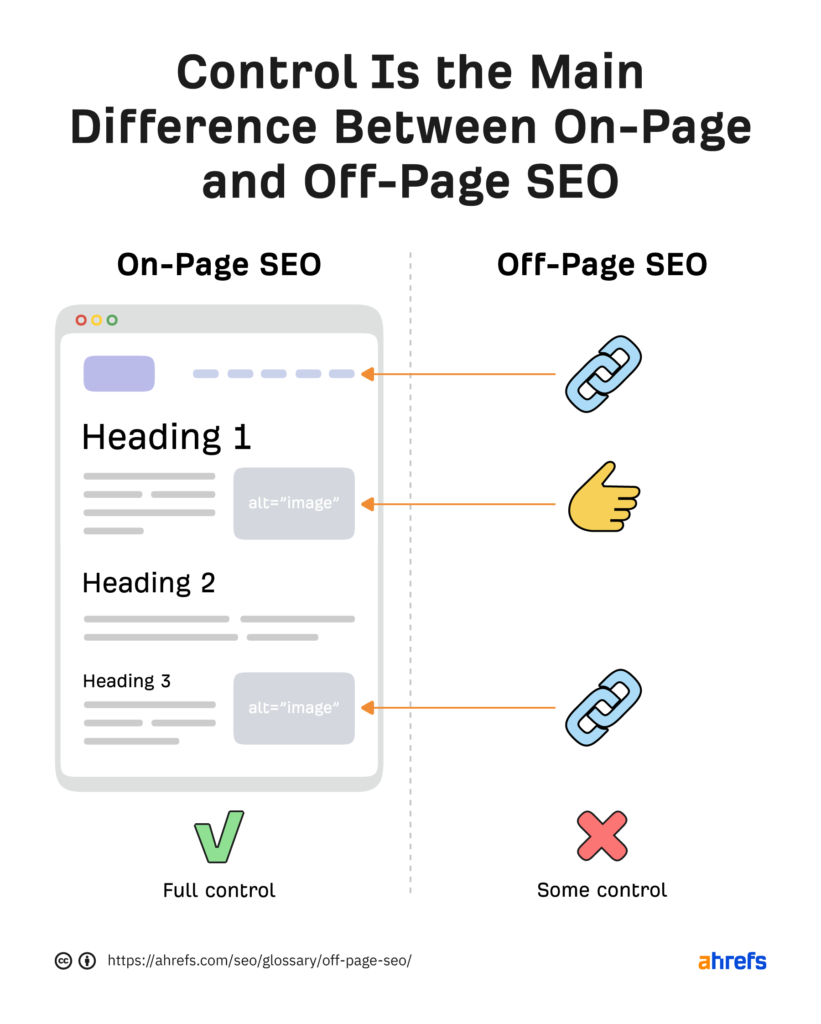
To achieve an all-encompassing and fruitful SEO strategy, the two main components to focus on are on-page SEO and off-page SEO. On one hand, your website's internal optimisation is covered by on-page SEO, while external factors like backlinks and social signals make up off-page SEO.
On a webpage level, you can use on-page SEO to optimise elements such as meta tags, headings, content quality, URL structure or site speed. On the other hand, for off-page search engine optimisation, you will rely more heavily on link-building efforts (see link acquisition), social media marketing or influencer marketing strategies.
In short, these two areas should be essential pillars in your overall ongoing search engine optimisation strategy – but what's the difference between these pieces of the puzzle?
There's no need to look outside your web pages when optimising them if you want to do it right– this is precisely what makes on-site so controllable for marketers. You're in charge!
Some people associate this with keyword stuffing – because keywords are often in “the page”. This doesn't need doing anymore via keyword stuffing; however, since Google has developed its algorithms over time, it catches unwanted behaviour and rewards natural language better!
- Amazon Kindle Edition
- Cameron-Kitchen, Tim (Author)
- English (Publication Language)
- 318 Pages – 01/07/2020 (Publication Date) – Exposure Ninja (Publisher)
Why is Off-Page Search Engine Optimisation Important?
Off-site search engine optimisation refers to anything done outside of your business' website that could influence rankings externally: think third-party sites appearing prominently in SERPS, e.g., Yelp reviews ranking highly depending upon queries due partly because they have some real estate inside results themselves from Google Maps integration among others sources too like Wikipedia entries sometimes showing high up which therefore affects where they rank organically if at all on page one.
Website owners, sometimes even agencies, will focus on this part of their strategy more heavily than any other because getting right here can make or break fortunes. For example, A new restaurant has opened in town and wants customers to find them via search engines. Well, it'll be hard (yet not impossible) for them to rank well organically due to partly downsizing as expected – if nobody knows anything about these guys apart from friends who've eaten there already, then chances are no reviews online yet, so Google won't trust its entity too highly, therefore, ranking lowly unless lots external factors come into play too such as social media presence across channels like Facebook pages where people leave comments etc…
Common On-Page SEO Mistakes to Avoid
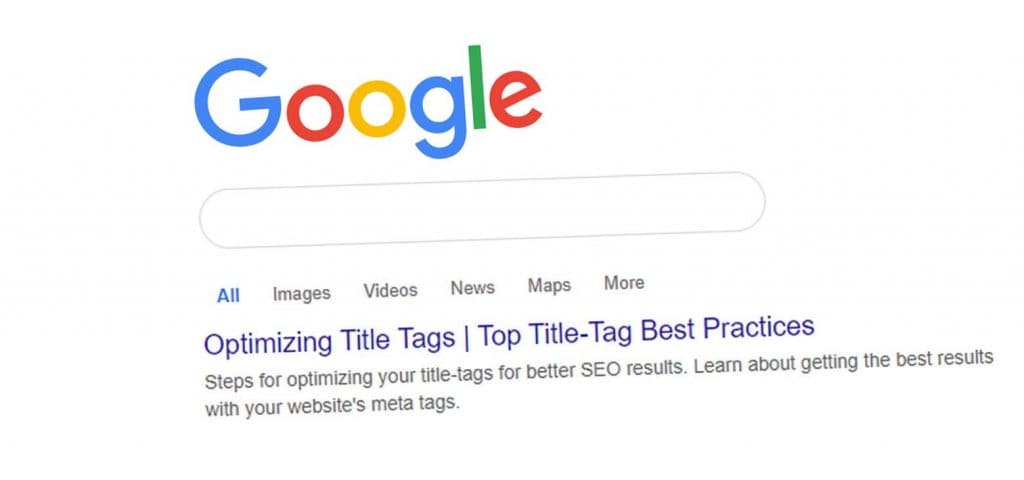
To improve the effectiveness of SEO efforts, it is essential to be aware of common on-page SEO mistakes. By avoiding these mistakes, you can ensure that your optimisation strategies are practical and contribute to better search engine visibility and user satisfaction.
One mistake to avoid is keyword stuffing and over-optimisation. Overusing keywords can harm your SEO efforts because search engines prioritise providing valuable and relevant content to users. It's more important to provide valuable content that naturally incorporates relevant keywords than to use the exact keywords throughout your content repeatedly.
For example, a financial advice website wants to rank well for “financial advice.” In this case, rather than focusing solely on gaining search engine rankings by using “financial advice” excessively in their content (and risking appearing spammy or unnatural), they should aim instead for comprehensive information about financial topics; this will attract users looking for genuinely valuable information — a far better goal than trying too hard with excessive keyword usage just in the hope of ranking.
Another essential on-page SEO consideration is ensuring proper mobile optimisation. Search engines increasingly prioritise mobile-friendly sites in their results as more people browse via mobile devices. Sites not optimised for mobile might see lower rankings and poorer user experience metrics.
For example, suppose an ecommerce site selling clothing isn't optimised for mobile devices. In that case, users may get frustrated when navigating the site or viewing product images — resulting from poor user experience (UX) signal data, which Google may then choose to measure indirectly observed signals such as clicks, dwell time, pogo-sticking, etc.… This would mean implementing responsive design techniques so that web pages render correctly across different screen sizes – even though full desktop experiences are being shown on much smaller screens – is beneficial both from Googlebot's perspective and from an end-user usability standpoint.
Thin or duplicate content is another crucial factor for on-page SEO: Search engines favour unique and valuable content, so websites serving up thin or duplicate content may find themselves lower-ranked in search results.
For example, a blog that publishes articles about technology news should ensure that each piece provides unique insights, opinions or perspectives. By doing so, the blog can establish itself as a reliable source of information and improve its search rankings.
By avoiding these common on-page SEO mistakes, you will ensure your optimisation efforts are practical and contribute to better search engine visibility and user satisfaction.
Measuring and Tracking On-Page SEO Success

Monitoring and determining whether on-page SEO efforts prove successful is imperative to enhance webpages and trace the efficacy of techniques. This data-driven approach can identify areas that require improvement to optimise available resources.
The following are some of the standard metrics employed in tracing any success recorded from on-page SEO:
Organic Traffic: This refers to keeping tabs on the traffic generated from organic search results. It assists in determining how effective one's on-page SEO effort has been.
Keyword Rankings: Monitoring rankings for target keywords helps gauge webpage performance and visibility level.
User Engagement: Checking out a few significant metrics, such as conversion rate, bounce rate, and time spent by users per page, proves helpful when assessing user experience levels. It further determines if you've been able to get your hands on an efficient strategy vis-à-vis on-page SEO.
Tools like Google Analytics alongside Google Search Console are helpful when it comes to understanding these particular metrics and ensuring that site owners track how much progress they're making with their store or business's On-Page SEO optimisation efforts.
Utilising Google Analytics allows businesses or website owners to check out aspects such as what pages drove the most traffic, organic traffic for the site, engagement numbers, bounce rates, etc. Evaluating this information regularly while adjusting your On-Page SEO strategy whenever necessary can improve your rankings considerably over time whilst attracting more organic traffic overall.
Website owners only gain after measuring alongside tracking On-Page SEO metrics since it empowers them to make informed decisions backed up by accurate data, ensuring better search engine ranking positions and increased user engagement overall.
Conclusion
As an SEO expert, you know that on-page optimisation is critical to a successful SEO strategy. By using effective techniques and strategies, optimising essential elements, following best practices, considering critical factors, and continually monitoring and adapting to changes, you can improve your site's visibility in search results – its authority and credibility, too.
Avoid common on-page SEO mistakes; measure the success of your efforts; improve continuously. That way, you'll drive more organic traffic (and conversions), gain authority and credibility online, and ultimately achieve long-term success in the competitive landscape of the web.
Remember: on-page optimisation requires ongoing attention and adaptation. Keeping up with trends and best practices to stay ahead of the competition will pay off in maximising your on-page SEO's effectiveness. So start optimising those web pages today!
And remember: as well as reaping benefits such as improved search visibility (and increased organic traffic), there are many other persuasive reasons for adopting or improving an effective on-page SEO strategy.
Last update on 2024-05-17 / Affiliate links / Images from Amazon Product Advertising API

